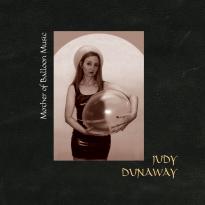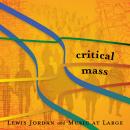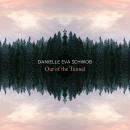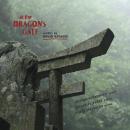Mother of Balloon Music
Mother of Balloon Music
New York, NY
| Mother of Balloon MusiciTunes Artist's PageiTunes Album Page | |||
|---|---|---|---|
| Song Title | Time | Price | |
| 1. | Etude No. 1 | 09:13 | $0.99 |
| 2. | For Balloon and String Quartet: I. — | 05:22 | $0.99 |
| 3. | For Balloon and String Quartet: II. — | 08:41 | $0.99 |
| 4. | For Balloon and String Quartet: III. — | 07:23 | $0.99 |
| 5. | The Balloon Factory | 03:10 | $0.99 |
| 6. | For Bass Koto With Balloons | 11:34 | |
| 7. | The Rubber Forest | 04:42 | $0.99 |
| 8. | Etude No. 2 | 05:42 | $0.99 |
When the media overload has finally driven us into a complete catatonic state, and M-Peg 9 and penetrating earbuds have reduced our hearing to a narrow midrange band, only one music will emulate the human experience of screaming tinnitus and post-war global-toasted rumble -- BALLOON MUSIC. Made from the blood of the Amazon and filled with human breath, disguised in the festive colors of a birthday party, the latex balloon expresses our fragile and tenuous existence in a way that we cannot face. The Alpha and Omega? It’s probably the egg.
JUDY DUNAWAY: MOTHER OF BALLOON MUSIC features compositions and improvisations by the balloon virtuoso herself, along with appearances by the FLUX Quartet, Tom Chiu, Damian Catera and Ryuko Mizutani. In “For Balloon and String Quartet” (commissioned by American Composers Forum), the astounding FLUX Quartet (Morton Feldman, Giacinto Scelsi, etc.) matches the extreme idiosyncrasies of the balloon note-for-note. Dunaway also performs searing improvisational duets with Chiu (founder of the FLUX) and creates industrial-tinged electro-improvisational pieces with sociopolitical transmission artist Damian Catera. Ryuko Mizutani (formerly of Kazue Sawai Ensemble) suspends space and time in Dunaway’s “For Bass Koto with Balloons.”
NEW YORK PRESS
“If someone didn't tell you the primary instrument was a balloon, you'd never know; she gets a phenomenal range of sounds out of them, most of which sound more electric than acoustic.” - Ken Goldsmith
VILLAGE VOICE
“In a scene where success often hinges on finding your niche, she's discovered one out a long drive from the main highway.” - Kyle Gann
DOWNTOWN MUSIC GALLERY
Compositions and improvisations for balloons, including "For Balloon and String Quartet" performed by Judy Dunaway and the FLUX Quartet, and "For Bass Koto with Balloons" performed by Ryuko Mizutani. Also featuring Judy Dunaway in electronic collaborations with Damian Catera and improvisational duets with Tom Chiu. "Over the course of a seriously diverse 57 minutes, this long overdue follow-up to Dunaway's groundbreaking 1998 Balloon Music release on CRI finds the mother of balloon music (as true and literal an epithet as possible) documenting some stunning technical and conceptual advances in collaboration with violinist Tom Chiu and the other members of FLUX Quartet. Even for folks like myself for whom balloon music has long ceased to be a novelty and has become nothing less than the inevitably unfolding future paradigm of human sound culture, this is pretty shocking stuff. Like Radulescu's String Quartet no. 4, some of the material on here is both musically revolutionary and viscerally devastating in its spectral intensity. This is microtonality as crafty violence.
In the second movement of the 21-minute opus "For Balloon and String Quartet", the bowed strings and rubbed balloon become indistinguishable swirls in a relentless swarm of dizzying circular pitch motion. Dunaway's two duo improvisations with Tom Chiu also use the primary balloon music technique of rubbing (or otherwise agitating) the surface (a technique insightfully labelled by Dunaway as an "orb-shaped string"), which allows for a flexibility of sound production far exceeding any other known instrument, but the big surprise here is the flexibility of the violin because Chiu somehow manages to make it sound like a balloon! The high-pitched acrobatics and sound mergers they achieve is breathtaking and will surely change many people's lives. In general, across the 37 minutes of various balloon techniques combined with the violin family, Dunaway's compositional methodology of using inherent qualities of balloons to constrain the string vocabulary represents a major breakthrough for bowed string music in itself. You've never heard a string quartet anything like this before. Balloon music purists may turn up their noses at Dunaway's "anything you can do with a balloon" kitchen-sink scope, which extends beyond rubbing to include balloon-as-reed (bracingly precise and beautiful arcing drones in the first movement of the FLUX Quartet piece), balloon-as-resonator ("with the tones excited by the subtle vibrations of hand-held tape-players and vibrators"), balloon-as-koto-preparation (in the 12-minute game-based performance by Ryuko Mizutani on bass koto with "impositions" by Dunaway), and the inevitable "real-time MAX/msp sampling/processing" (two pieces in collaboration with Damian Catera), but the bottom line is that Dunaway delivers something or another in this program to strike anyone with both terror and joy (not necessarily at the same time) at the very core of their being. Her years of dedication to balloon music have brought her to a level of refinement in a handful of aesthetic fixations for which there are no peers. Anyone who still hasn't been initiated into the future of music yet must hear both this unbelievably impressive disc and Ricardo Arias' entirely different and equally impressive balloon music treatise Musica Global. It's urgent. (Please note: the balloon revolution goes beyond sound and has layers of philosophical and sociologial depth beyond the scope of this blurb. Read Dunaway's great liner notes and ask me about this if you bump into me on the sidewalk sometime.) - Michael Anton Parker
EXPERIMENTAL MUSICAL INSTRUMENTS
“Dunaway doesn't leave any room for doubt -- the balloon is a musical instrument, and a wonderfully hybrid one at that.” - Rene Van Peer
STARTLING MONIKER
In general, obstacles tend to amplify the creative process. When an artist has to “work around” a problem, the result is quite often a striking new idea or process. In my personal experience, the obstacle has generally been that I’m more or less broke. Because of this, I’ve done a lot of investigating into how to achieve electronic sounds in non-electronic ways– small party whistles become failing modems, my mouth is an envelope filter, thawing ice or salt sprinkled on tin foil can simulate the Max/MSP granular microsounds so often heard in avant-garde recordings.t was with a feeling of synchronicity that I opened a package from Innova Recordings to find Judy Dunaway’s “Mother of Balloon Music.” Having only a few days prior hit upon the notion that a rubbed balloon sounded remarkably like an expensive synthesizer, I had been experimenting with a few leftover party balloons to generate rapid squeaking, low rumbles, the popping effect produced by allowing the ballooon surface to “slip” under heavy pressure, shouting through the balloon, and (my favorite) a continuous wavering tone from rubbing circular patterns on the surface with wet fingertips. Turns out, all I had been missing was a few talented musicians to play along with me, and nearly twenty years of practice! With “Mother of Balloon Music,” Dunaway shows why she deserves the title– although she may not have invented the techniques (I’m being pragmatic, and citing generations of children who are natural improvisors), she certainly has put in major effort to nurture the sounds, techniques, and ideas associated with the balloon-as-instrument. If you don’t believe me, check the liner notes. Dunaway makes note of the almost spiritual connection a player has to the instrument. It is, after all, filled with human breath. Dunaway ties thoughts about the destruction of the Amazon rainforest (a source of rubber), with notions of the balloon as a statement against “high art”, gender inequality, and the separation of music from sensuality. Obviously, I hadn’t gotten around to discovering any of this, so in many ways it was very interesting and exciting to see than an artist has so fully explored (and continues to explore!) an aural realm of personal interest to myself. On the other hand, it was a little depressing– New York strikes again! Does this happen to you too? But back to the album at hand… “Mother of Balloon Music” has excellent recording quality; immediate and up-front, with well-defined sonic detail that I know is present in balloon sounds. The liner notes are well-written and thought-provoking, but a bit hard for me to read with long blocks of text that might be nicer in columns. Not much of a complaint, really! I especially appreciate the background information provided for Dunaway, as well as her collaborators– this is a polite touch that is all too often overlooked. - Dave X
COILHOUSE MAGAZINE
Initially, exposure to composer/performer Judy Dunaway and her “virtuostic balloon-playing” broke my brain. But after the giggle fit subsided, I realized I was genuinely in awe of the woman, for many of the same reasons I’ve long adored Harry Partch, Hans Reichel, Clara Rockmore, and Klaus Nomi. Like them, Dunaway is utterly fearless in her approach to her craft, and unflinching in the face of inevitable backlash from both her classical and avante-garde contemporaries. (It takes ovaries of steel to play Lincoln Center with nothing but an amplified balloon between your knees, ah tell you whut.) Her Etudes No.1 and 2 for Balloon and Violin (2004) are particular favorites of mine, perhaps because they’re what my own stuffy classical violin instructor would undoubtedly have dismissed as “good musicans behaving unforgivably.” I’m at a loss to accurately describe the music… imagine what an orgy of parasitic wasps being slowly pressed to death between two lubricated sheets of mylar might sound like. New York Press writer Kenneth Goldsmith likened Dunaway’s live performances to witnessing “Cab Calloway in Munchkinland… Olivier Messiaen on helium.” Dunaway’s own statement of purpose is more straightforward: My own work … does not come out of a void. Creating a large body of work for balloons has allowed me to develop a vocabulary outside the realm of oppressive classical heritage. It has raised the ordinary and mundane to the status of high art. I have fetishized this simple cheap toy in my music, as the violin has been fetishized for centuries by Western European-influenced composers. In an era where the progress toward a woman’s control of her own body is threatened, I have coupled myself to a musical instrument that expresses sensuality, sexuality and humanity without inhibition. - Meredith Yayanos



